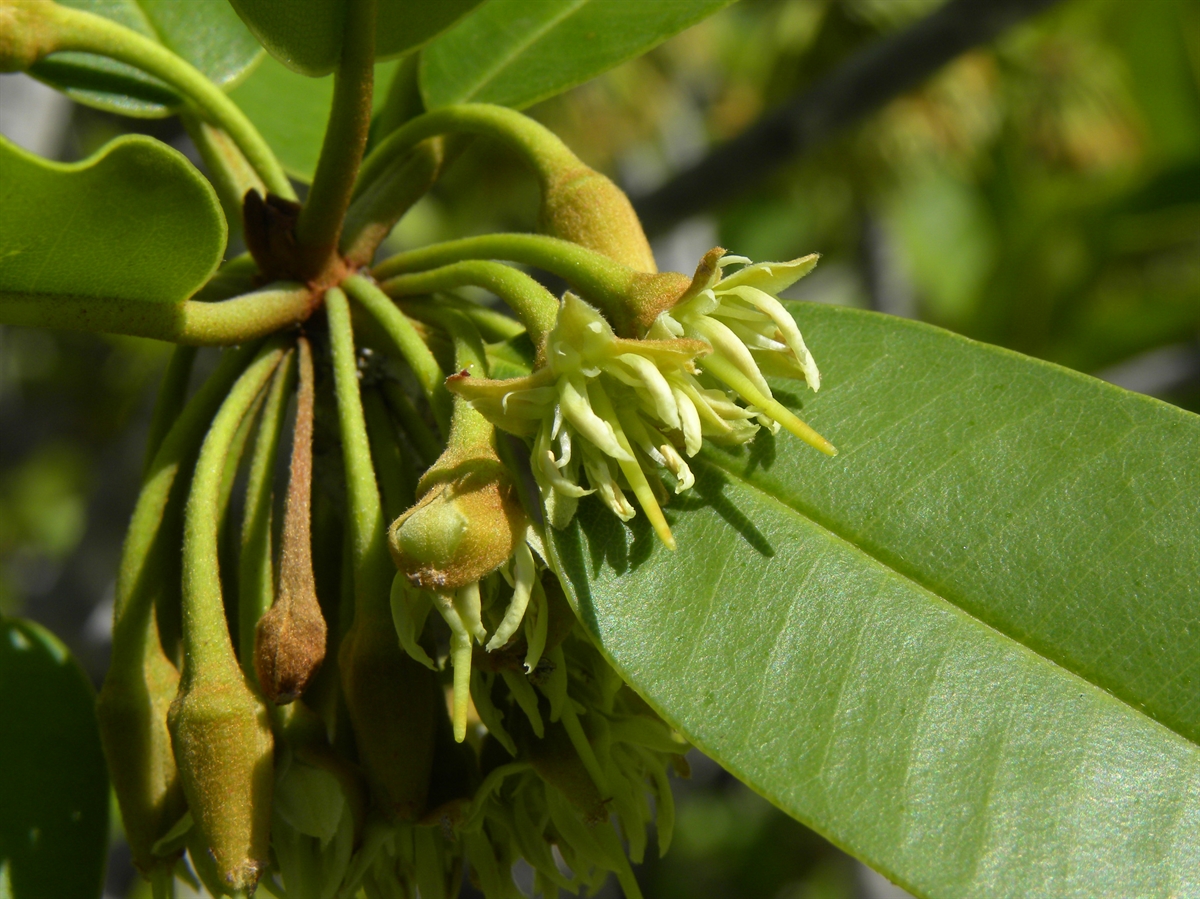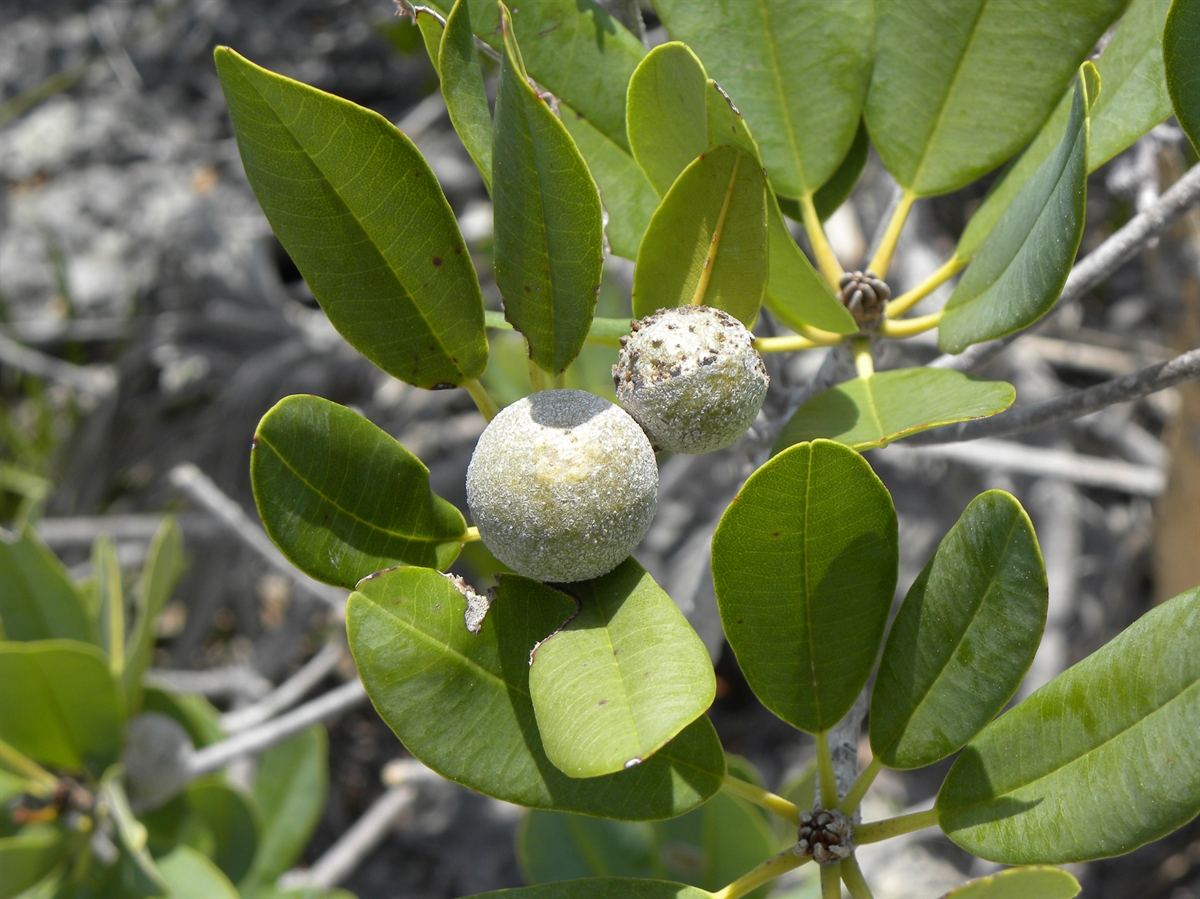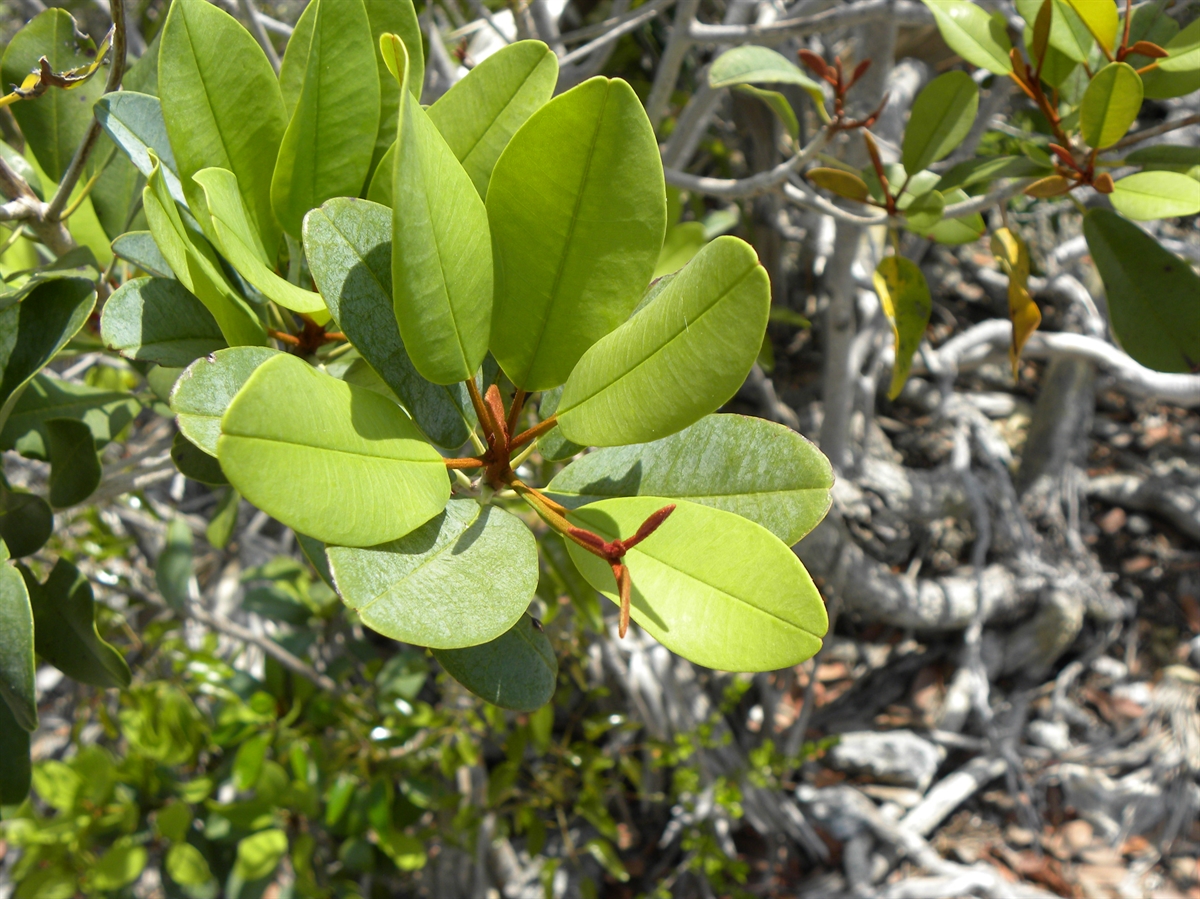Habit: Manilkara bahamensis grows as a medium to large tree up to 13 m in height and a trunk to 50 cm. The leaves are arranged alternately and are clustered at branch tips. The leaves are lanceolate to oblong with an acute leaf apex and entire leaf margin. Young leaves and branch tips are covered with fine reddish brown hairs. All parts of the plant produce a milky sap.
The complete, perfect, actinomorphic flowers are arranged in clusters in the axils of leaves. The floral structures are covered in reddish brown hairs. The calyx has 6 sepals. The corolla has 6 petals that are fused into a shallow cup. The corolla cup has short teeth between the lobes. There are 6 stamens fused to the rim of the corolla as well as numerous staminodia (non functional stamen like appendages). The ovary is half inferior with 6 locules and numerous seeds. The fruit is a berry that is light brown and scaly at maturity.
Habitat: Manilkara bahamensis grows in Dry Broadleaf Evergreen Formation- Shrublands (scrublands) on both limestone and sand substrate in coastal areas.
Distribution: Manilkara bahamensis occurs on all island groups in the Lucayan Archipelago as well as southern Florida and the Greater Antilles.
Medicinal/Cultural/Economic usage: Manilkara bahamensis has been used in the Lucayan Archipelago for soothing and aphrodisiac teas. It is edible but has a milky, gummy sap. The wood has been used for carving and furniture. It is used in the horticultural industry in coastal areas because of its salt tolerance.
There is a closely related species M. zapota (Dilly Tree) that is grown for food.



